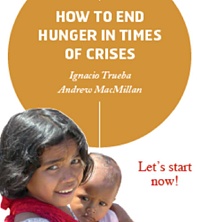Casella Postale 29, Scansano, 58054 GR, Italy
Dear Friends of Got Matar,
As in almost every other country, the coronavirus pandemic has hit Kenya hard this year. As soon as the first case was identified, the government put in place strict control measures, especially in the larger cities. These are gradually being relaxed and schools have been partially reopened, giving preference to students at both primary and secondary levels who would normally have been taking their final exams this November.
From a health perspective, Kenya has been remarkably successful in controlling COVID 19. In its population of just over 50 million, only 1,300 deaths have been attributed to the pandemic between March and November this year, a period in which a total of about 220,000 Kenyans would normally have died from all causes. The economic impact of the disease, however, has been huge because of the restrictions imposed on the population and the complete collapse of the tourism sector which normally accounts for about 10% of GDP.
You will recall that our activities in support the Got Matar Community Development Group were triggered by the massive death toll caused by illnesses related to HIV/AIDS which was first identified in Kenya in 1984. By around the turn of the century HIV was killing about 300,000 Kenyans each year, and even last year, 21,000 people died from AIDS associated causes – making it still about 10 times as lethal as COVID 19.
I first visited Bondo District, in which Got Matar was then located (it is now a Sub-County of Siaya County), in 2000 when this was the District with the highest level of HIV infection in all of Kenya. I wanted to learn how people there viewed their future.
In May this year I made a comparison between the human impact of the two pandemics which can be viewed on the Got Matar website (Two-pandemics.pdf). The main point that I tried to make is that, while COVID 19 has caused heavy short-term economic damage and individual hardship, HIV/AIDS has led to deep long-term structural damage to Kenyan society which is still being widely felt. In Kenya as a whole 3.6 million children – one in 5 of the under-18 age group – are still now classified as ‘orphaned or vulnerable’.
In the Got Matar Community HIV/AIDS killed off a great swathe of the working age population and left one third of the children orphaned, excluded from the normal intergenerational passing of knowledge from parents to their children and unlikely to stay long in school. Through upgrading 10 Primary Schools, creating a brand-new Secondary School that is now bursting at the seams, and starting up an Institute of Technology, the Community has given top priority to investing in quality education for their children. Those born at the height if the HIV infection in the early years of this century are now leaving this strengthened educational system, well qualified to enter the job market or to go on to higher education.
Looking back over the last 20 years, and particularly to 2006 when I accepted the Community’s invitation to help them raise funds to carry their programme forward, I feel that we have been very lucky to have had this opportunity to have been able to support a well-managed local initiative that is truly opening up a brighter future to young people in one of the most deprived rural communities in Kenya.
This Year
2020 has been a bad year for education as the schools and the Institute of Technology were shut in March and only reopened recently. However, it has been an excellent year for construction which has been allowed to continue throughout the lockdown period.
Early in the year, with funding from the BERFRED Foundation, a Nursery building was completed. Here the Community provides care and nutritious lunches to young children, enabling their young mothers to enrol in the IOT’s practical training courses or to continue their education at the Secondary School. Before it had to be closed because of Coronavirus restrictions, about 30 children were in regular attendance. It is hoped that it can re-open in January.
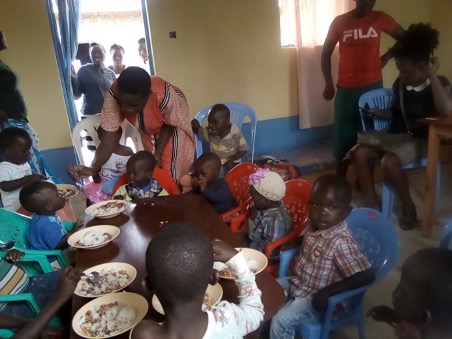
Lunchtime in the new IoT Nursery, run by the Community Development Group with the help of volunteers.
The year was also marked by the completion of new training workshops for the popular Food and Beverage and Car Mechanics courses which have both been operating in rather unsuitable rented buildings for several years.
The Food and Beverage building, together with new equipment, has been financed by your contributions, especially from donations given during 2019 and last Christmas.
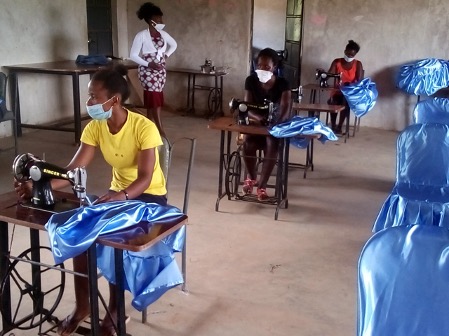
Students in the Dressmaking and Tailoring course are making washable plastic covers for chairs in the Food and Beverage new training workshop. One part of the IoT helps another.
The full costs of setting up and equipping what is now called the ‘Automotive Department’ have been covered by a donation from our friends Giorgio Possio and his wife, Caterina Valfrè di Bonzo, to commemorate their daughter, Anna, who tragically died very young from cancer two months after her daughter, Sofia, was born in Turin. Anna was an inspiring teacher of high efficiency and environmentally friendly (‘LEAN’) management systems to Italian technology students, similar to those who attend the IoT.
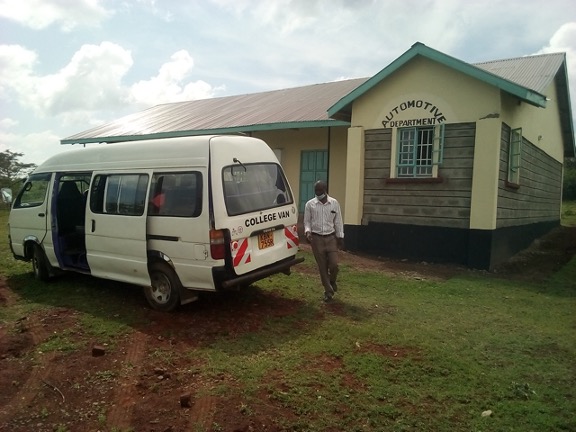
The IoT matatu (or minibus), restored by IoT Mechanics students, is to be used for driving lessons. It is parked in front of the new Automotive Department training workshop.
In order to retain IOT staff during the lockdown period when income from tuition fees and the sale of goods and services dried up, we have met the full cost of their salaries so as to ensure that they would be in place to start classes up when lockdown ended. They, in turn, voluntarily devoted part of their income to finance the urgent construction of an extra toilet block at the IoT and to buy more technical books and other training material for the Institute’s Library.
The Secondary School has also opened its long-awaited Administration Block, financed entirely by the Kenyan Government.
As agreed with the Community about 3 years ago, we have been gradually cutting back our funding for the Secondary School bursary programme to reduce its donor dependence. The number of new Form 1 entries to the programme has been cut from 40 per year by 10 each year. For 2021, 97 awardees, including 10 new entries to the 4-year programme, will be donor-funded. The overall scale of the programme, however, has been retained as former students have come forward to sponsor bursaries as a signal of gratitude for having been able to study at the Secondary School. (See Progress-with-bursaries-towards-local-sustainability)
2021 and Beyond
For the coming year, the top capital investment priority is the construction of a permanent training building for the IoT’s Information and Communication Technology (ICT) courses at an estimated cost of Euro 23,000. This and the replenishment of computers and related equipment (Euro 11,000) will be the prime destination for any funds that you may wish to contribute during the year. When completed, this will result in 7 of the 10 courses to be offered by the IoT being run in purpose-built training rooms, each including space for practical work. This is a remarkable achievement for such a young institution. One of the main goals of the ICT Department will be to see that all IoT graduates leave the Institute with a high level of computer skills.
The Community also intends to build a Girls’ Hostel to enable IoT students coming from far afield to stay safely on the campus. This will replace the temporary dormitory building that was built by staff and student volunteers about 3 years ago to respond urgently to demand. Constructed from corrugated iron sheeting for 20 boarders, it now holds 30 students in very cramped conditions (see below).
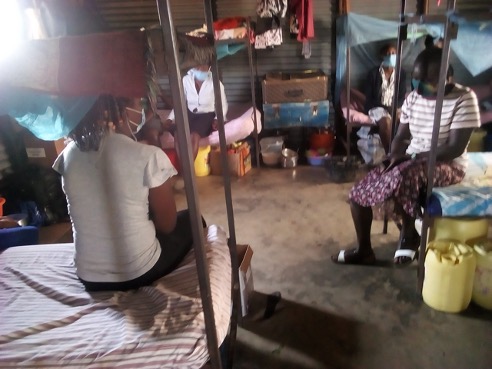
Temporary dormitory
Combined with the Nursery, the new Hostel should help to boost the enrolment of girls at the IoT where, at the time of lockdown, they already accounted for more than half its students. The initial intention is to build space for 50 students. including dormitories, common room, washroom and supervisor’s accommodation. The cost would be about Euro 20.600. (£19,500 $26,000).
The big challenge for the IoT is to transform itself into a financially sustainable community-run institution, as was intended from the outset. An independently run institution, supervised by the government but not part of the bureaucracy, can be run by the Community to maximise benefits for local people and to attract paying students from elsewhere in the County. It would become the Community’s premier income-generating enterprise. Any profits could be reinvested in its progressive expansion or in meeting other priority needs such as improvement of water supplies and sanitation. Good progress in this direction was being made until the coronavirus outbreak which led to a total income collapse.
Projections show that, as enrolment expands and the local economy starts to recover, tuition fees should be able to meet core operating costs and other costs (for instance for purchase of training materials) can be covered by income from sales of services and goods.
Grace Ochieng Andiki, the GMCDG founder and its Programme Coordinator found herself in lockdown in the USA in March when she was visiting her daughter who works as a nurse there. She was able to ‘work from home’ and kept in close touch with progress in Kenya and eventually was able to fly home in early August. Soon after her return, she started consultations with young people, especially girls, who had studied at the secondary school or the IoT, with the aim of exploring how they could best contribute to future development within the community. There seems to be a strong commitment to an equitable approach to development that will reduce poverty while being environmentally sustainable. Hopefully these discussions will lead to practical proposals for future actions by the Community to promote this vision.

The IoT Board of Governors, following one of its regular meetings. Grace is at top right and the IoT Manager and Automotive Department head trainer, Denis Anam, is at front right.
Conclusions
Although the Got Matar programme has had its ups and occasional downs, the overall verdict is very positive. Since 2006 over 2,000 students have entered the Secondary School and each year over 200 are graduating, many of whom are going onto higher education: others are applying their new knowledge in businesses and services within the surrounding area. Though it is difficult to quantify the benefits attributable to better access to good local secondary education, which was not formerly available within the community area, these seem bound to be very positive.
The IoT is also contributing to the creation of an increasingly skilled population, with a focus on training in subjects that can play a really important role in local development and to equip people to get good jobs elsewhere.
The success is attributable mainly to the Community’s vision of the central role that high quality education could play in enabling young people, born during the height of the HIV/AIDS epidemic, to face a brighter future. The members of the Community Development Group have translated their vision with great efficiency into building and nurturing the growth of both a Secondary School and an Institute of Technology. And this has been made possible by the generosity and constancy of your support over the last 14 years or so. We can take pride in what has been achieved through our combined efforts.
Big thanks are also due to the important assistance provided by the registered charities that have helped us manage donations in Italy and UK. Vanda Altarelli, the founder of Associazione SONIA in Rome, has been an inspiring and enthusiastic partner throughout this exercise. The staff of Ace Africa (UK) in London and of Ace Africa (Kenya) in Bungoma have also put a lot of effort into funds management and on-the-ground mentoring. Their cooperation has been especially valuable this year as it has enabled the building programme to go ahead with few delays during the lock-down period which was complicating their own lives.
If you wish to make a donation, please refer to the Donations section of the website (/donations) which is being updated. US-based supporters will find ways in which they can get help in making donations to Got Matar.
Let us hope that 2021 will be a year in which Coronavirus can be put behind us and we can all pull together to create a brighter future for the young in our world, just as the Got Matar Community has done for its children, with great vision, over the past 20 years.
With best wishes.
Andrew MacMillan
